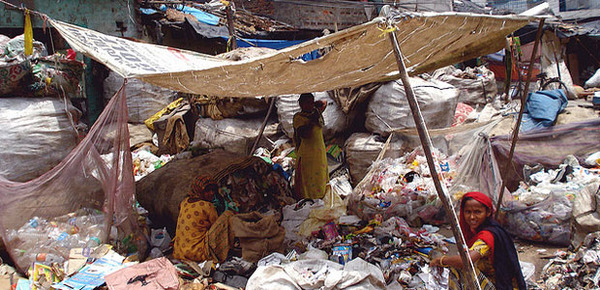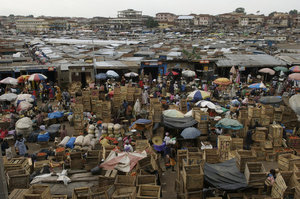With more people than ever before living in cities – and a tidal wave of migration from rural areas, urban poverty is increasing dramatically. A new book reveals that the worst places for this new urban problem are all south of the equator – and expanding fast.
Singapore, 18 February 2013. According to the World Bank, for the first time in history more than half the world’s population lives in cities. And more than 90 percent of this dramatic expansion in urban growth is happening in the developing world, adding an estimated 70 million new residents to urban areas each year. By far the bulk of these new city dwellers will be living south of the equator, with the urban population of South Asia and Sub-Saharan Africa (the world’s two poorest regions) expected to double over the next two decades.
“If we want to build a better world we have to understand better what the urban poor experience,” says Professor Diana Mitlin of the University of Manchester. “We have to understand what it means to have little income and face income, spatial, social and political inequalities. Only then can governments, development agencies and community organisations work with the urban poor to improve their options.”
 Around one billion people live in poverty around the world, and the number growing
Around one billion people live in poverty around the world, and the number growingProfessor Mitlin, who also works with the International Institute for Environment and Development (IIED) has published a book titled Urban Poverty in the Global South, co-authored with David Satterthwaite of the IIED’s Human Settlements and Urban Poverty department.
Mitlin and Satterthwaite say that governments and aid agencies fail to tackle urban poverty because they fail to understand it, and the billion-plus poor people who live in towns and cities worldwide. Their book draws on more than 20 years of research and claims that policymakers and development organisations underestimate urban poverty – and that this can lead to poor policies that fail to address injustice and inequality.
“The fates of the billion-plus people who live in poverty in towns and cities world-wide will have a major impact on human development,” says Satterthwaite. “But until decision-makers better understand how and why urban poverty exists, their actions will only ensure that it persists.”
 The link between economic growth and population number is not yet proven in any conclusive way
The link between economic growth and population number is not yet proven in any conclusive wayThe majority of this urban growth is attributed to both natural population growth, and rural to urban migration. Urbanisation contributes to sustained economic growth that is critical to poverty reduction, with economies of scale and agglomeration attracting investors and entrepreneurs - which is good for overall economic growth, according to conventional theories. But Mitlin and Satterthwaite challenge the idea that economic growth alone can eliminate poverty, as many successful economies show little sign of decreasing poverty in their urban centres.
While rapidly expanding cities do provide opportunities for many, particularly the poor attracted by job prospects, city life can also present conditions of overcrowded living, congestion, unemployment, lack of social and community networks, stark inequalities, and crippling social problems such as crime and violence.
And as the authors point out, one in seven people worldwide live in poverty in urban areas, and most of these live in the global South – mostly in overcrowded informal settlements without adequate water, sanitation, security, health care and schools. People there endure poor living and working conditions, low incomes and inadequate diets, which all add to large health burdens or premature death.
Compounding these problems, the urban poor have little voice and few means to influence the policies and pressures that work against their interests.
 Children are the biggest losers from urban poverty
Children are the biggest losers from urban povertyAccording to Mitlin and Satterthwaite, governments and aid agencies often fail to define and measure poverty adequately, using systems based on the ‘US$1 per day poverty line’. This greatly understates the scale and depth of urban poverty because in so many cities, non-food needs like housing, water, sanitation, education and employment all cost way more than US$1 a day.
“Set a poverty line too low and poverty seems to disappear, especially in high cost locations,” says Mitlin. “Such simplistic measures also take no account of the full dimensions of what poverty actually means to people who live it.”
As the World Bank notes, “ … given the high growth projections for most cities in developing countries, the challenges of urban poverty and more broadly of city management will only worsen in many places if not addressed more aggressively.” Read the book and find out what we can do to redress this growing problem.
Contact the authors
Diana Mitlin (diana.mitlin@iied.org)
David Satterthwaite (david.satterthwaite@iied.org)
Publisher’s page http://www.routledge.com/books/details/9780415624671/